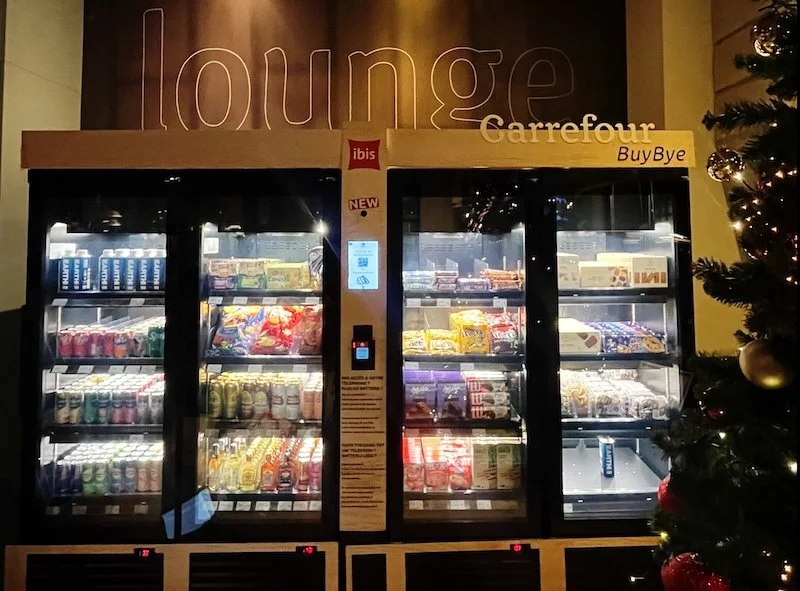The role of robotics in enhancing retail efficiency
In the ever evolving retail landscape, businesses are under increasing pressure to deliver seamless customer experiences while maintaining operational efficiency.
Robotics has emerged as a game-changing technology, transforming how retailers manage inventory, serve customers, and streamline logistics. By integrating robotic solutions into their operations, companies are achieving higher efficiency, cost savings, and improved customer satisfaction.
Applications of Robotics in Retail
1. Inventory Management
Effective inventory management is critical to retail success, and robotics is redefining this area.
Automated robots efficiently move and retrieve goods in warehouses, for example. This saves time that would otherwise be needed to locate items and deal with possible errors. Automated sorting systems powered by robots are also being used to sort products rapidly and ensure accurate shipments every time.
2. Customer Service
Robotics plays a pivotal role in enhancing the in-store customer experience. Taking it from the physical world into the digital, we see how AI and chatbots are changing customer service in online gaming sites and casinos too. You can experience this if you have a Pelican Casino login, since various iGaming sites are using bots to help customers instantly.
In the retail world, customer service robots assist shoppers by answering questions and directing them to products. An example of this is SoftBank’s “Pepper” robot that’s already been deployed in various stores to improve customer engagement. Self-service kiosks are also popping up at retail locations that let customers check out automatically during peak hours.
3. Logistics Optimisation
From warehouses to delivery, robotics optimises supply chain operations through Robotic Process Automation (RPA). This automates repetitive tasks like order processing and shipment tracking. RPA frees up human employees for more strategic tasks and improves overall efficiency.
4. Automated Checkout
Retailers are implementing robotic solutions for cashless, seamless transactions. Automated checkout systems use robotics to scan, pack, and process payments, eliminating the need for traditional cashier lines. Amazon Go stores are pioneers in this area, utilising advanced robotics and AI to create a checkout-free shopping experience.
Case Studies of Successful Robotic Implementations
Amazon: Leading the Charge with Robotics
Amazon is a trailblazer in robotics, leveraging cutting-edge solutions to transform retail logistics. Its use of Kova robots is changing inventory management. The robots transport shelves to human workers and reduce picking time by 50%. This leads to faster order fulfillment and fewer mistakes. Amazon’s robots also sort packages efficiently which streamlines the shipping process more than ever.
Walmart: Enhancing Inventory Accuracy
Walmart has also embraced robotics to improve inventory management and store operations. Its Bossa Nova Robots scan shelves to ensure every product is stocked and labeled properly. The company also utilises floor cleaning robots to maintain cleanliness, which also frees up human workers for customer engagement.
H-E-B: Innovating Customer Service
The Texas-based grocery chain H-E-B is deploying robotics to enhance customer service and operational efficiency. Its AisleBot assists customers and guides them to specific products while also offering recommendations. The company also uses RPA and supply chain robotics to streamline various operations.
The Impact on Business Operations and Customer Experience
Operational Efficiency
Robotic applications improve retail efficiency by automating labour intensive processes, reducing errors, and optimising resource allocation. Automation minimises labour costs while increasing productivity. Unlike humans, robots can operate 24/7 and ensure faster order processing and reduced delays in logistics.
Enhanced Customer Experience
By integrating service robots and self-service kiosks, retailers can provide a smoother, more engaging shopping experience. Customer service robots, for instance, are designed to offer personalised recommendations and build a connection with the shoppers. On the other hand, automated checkout systems let customers pay more quickly, saving time.
Broader Implications of Robotics in Retail
Retail Technology Trends
The adoption of robotics in retail reflects broader trends in technological transformation, such as:
● AI Integration: Robotics solutions increasingly incorporate AI for better decision-making and predictive analytics.
● IoT Connectivity: Robots connected via the Internet of Things (IoT) share real-time data, enabling smarter operations.
Challenges and Considerations
Despite its benefits, the integration of robotics in retail poses challenges that must be met swiftly if this industry is to see widespread adoption. Some of these include:
● High Initial Costs: Implementing robotics solutions requires significant upfront investment.
● Workforce Impacts: Automation may reduce the demand for certain roles, necessitating workforce reskilling.
● System Maintenance: Robots require regular updates and maintenance to ensure optimal performance.
Future Outlook for Robotics in Retail
As the world moves rapidly toward more automation, even going so far as to give writers a way to write automatically, the world of robotics is also progressing. In the coming years, we might be seeing the following:
● Next-Gen Customer Service Robots: Future robots may use advanced AI to offer even more personalized customer interactions.
● Autonomous Deliveries: Drones and delivery robots could become commonplace, further optimizing logistics.
● Smart Stores: Fully automated stores that use robotics for everything from inventory management to checkout will redefine the shopping experience.
Tips for Retailers Embracing Robotics
● For retailers looking to leverage robotics, here are some key strategies:
● Pilot robotic solutions in specific areas, such as inventory management, before scaling up.
● Choose applications that provide measurable benefits, such as cost savings or enhanced customer satisfaction.
● Ensure staff are trained to work alongside robots, maximizing the value of the technology.
● Keep up with retail technology trends to adopt the latest innovations.
● Collaborate with technology providers specializing in robotics to ensure a seamless implementation.
Conclusion
The integration of robotics into retail operations marks a significant step forward in enhancing efficiency and customer experience. From warehouse robotics to customer service robots and automated checkout systems, robotic solutions are reshaping the industry.
As retailers embrace these advancements, they not only improve operational processes but also position themselves as leaders in an era of technological transformation. While challenges exist, the potential rewards make robotics an indispensable part of the future of retail.
By staying innovative and strategic, retailers can harness the full potential of robotics to thrive in an increasingly competitive market.































Continue reading…